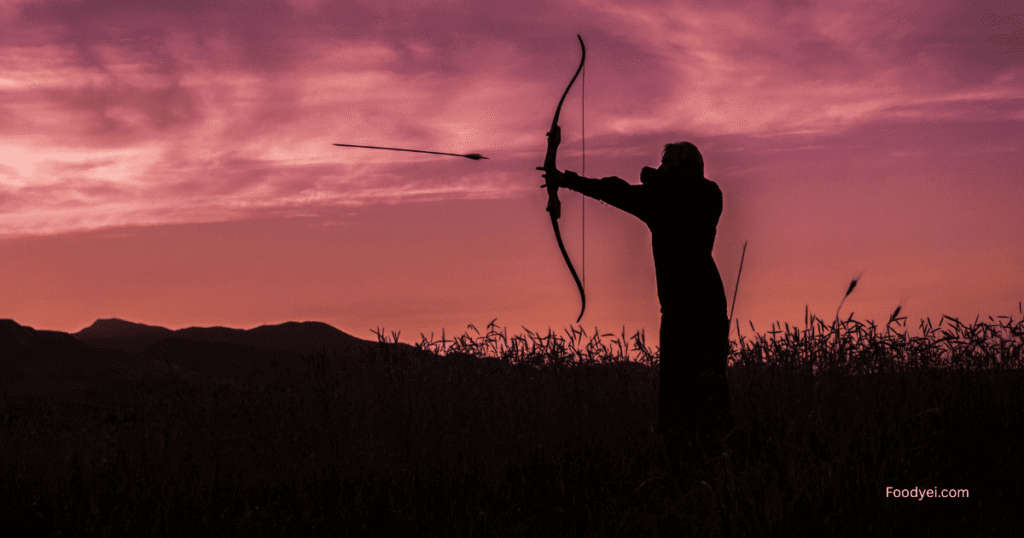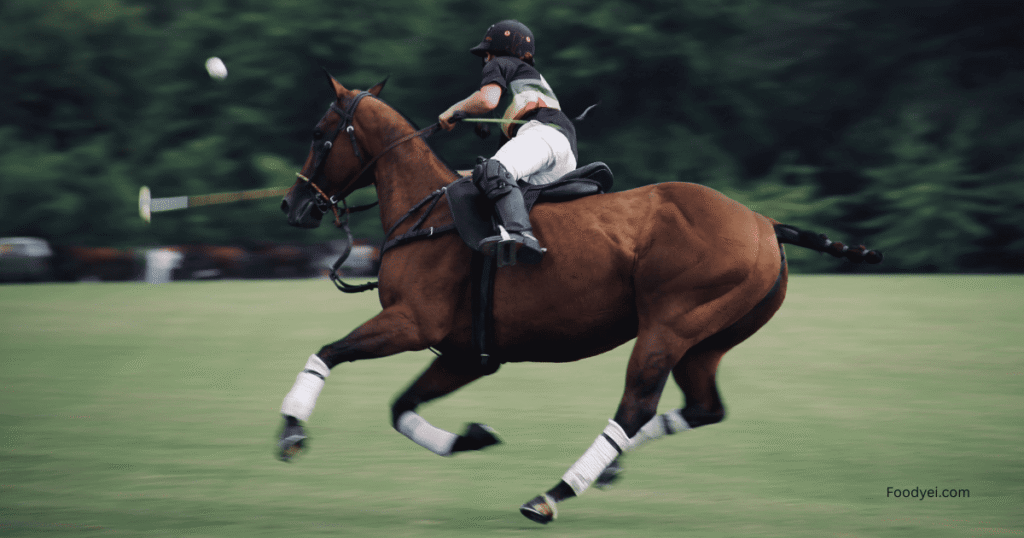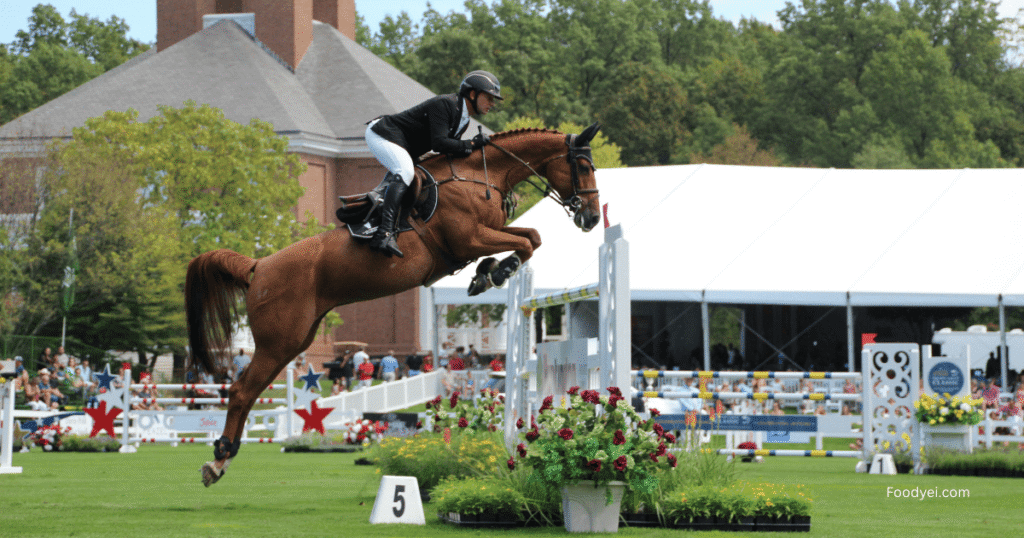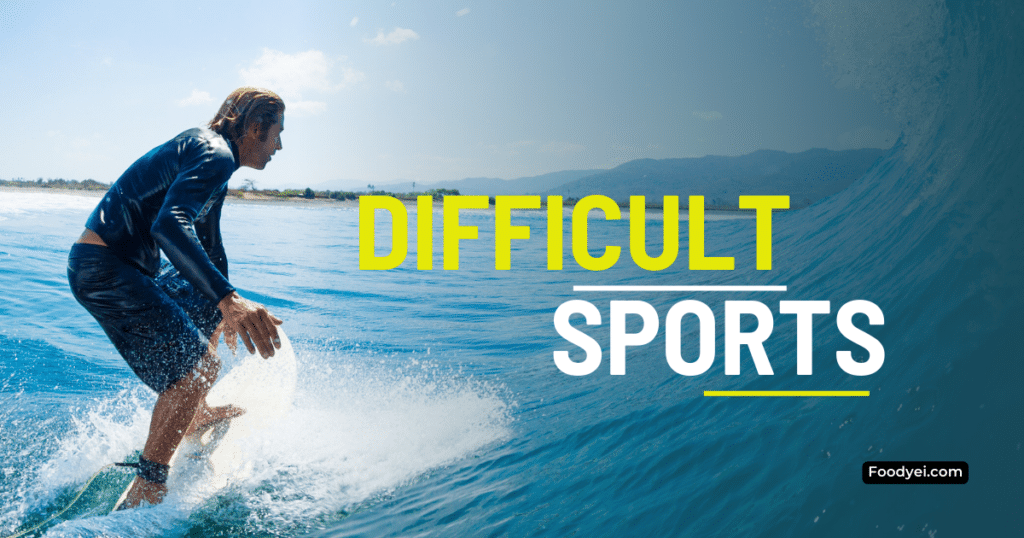Learning a new sport is an exciting journey, but some sports demand a higher level of dedication, skill, and perseverance than others. Whether you’re a beginner eager to dive into a new challenge or simply curious about the most difficult sports to master, this comprehensive guide will provide you with everything you need to know about the hardest sports to learn.
From the extreme physical demands of gymnastics to the split-second precision required in Formula 1 racing, these challenging sports represent the pinnacle of athletic achievement. Each sport on our list of the most difficult sports to learn requires years of dedicated training, exceptional physical conditioning, and mental toughness that separates recreational participants from serious athletes.
In this detailed post, we’ll explore the 20 most difficult sports to learn, covering what makes each sport challenging, how long it takes to get proficient, the key skills required, and practical tips to help you succeed on your athletic journey.
What Makes a Sport Difficult to Learn?
Understanding what makes certain sports more difficult than others requires examining several key factors that contribute to the overall challenge of mastering these athletic disciplines.

Physical & Mental Demands
Physical Strength & Flexibility Some of the hardest sports to learn, like gymnastics and figure skating, demand exceptional physical flexibility, strength, and stamina. Athletes must develop power-to-weight ratios that far exceed normal fitness levels while maintaining the mobility to execute complex movements.
Mental Toughness & Focus The most challenging sports often require intense mental focus, decision-making under extreme pressure, and the ability to overcome fear. Sports like boxing, Formula 1 racing, and rock climbing test an athlete’s psychological limits as much as their physical capabilities.
Coordination & Balance Many difficult sports to master require extraordinary levels of coordination and balance. Sports like surfing, ice hockey, and parkour demand athletes to maintain control while their environment constantly changes, requiring split-second adjustments and perfect timing.
Skill Mastery & Learning Curve
Technical Complexity The hardest sports to learn typically involve mastering numerous complex techniques. Sports such as archery, polo, and wrestling require deep understanding of form, timing, and tactical application that takes years to develop properly.
Learning Time Investment The time required to become proficient varies dramatically among difficult sports. While some challenging sports like rock climbing might show progress within months, others like gymnastics and figure skating require consistent training for 5-10 years before achieving competitive competency.
Equipment and Environment Mastery Many of the most difficult sports involve mastering complex equipment or adapting to challenging environments. Formula 1 drivers must understand intricate car systems, while surfers must read ocean conditions that change by the minute.
Difficulty Rating System for Sports
To provide clear guidance on the relative challenge of each sport, we’ve developed a comprehensive 5-point difficulty scale that considers multiple factors affecting the learning process.
Top 20 Most Difficult Sports to Learn (Ranked)

1. Gymnastics
Why It’s So Hard: Gymnastics consistently ranks as the most difficult sport to learn due to its extreme demands across every evaluation category. This challenging sport requires athletes to master multiple apparatus while developing exceptional strength, flexibility, and artistic expression simultaneously.
Key Learning Challenges:
- Exceptional Physical Requirements: Elite-level strength-to-weight ratios, extreme flexibility ranges, and powerful explosive movements that push human capabilities to their limits
- Multiple Apparatus Mastery: Athletes must develop proficiency on 4-6 different pieces of equipment, each requiring unique skill sets and techniques
- Mental Courage Development: Overcoming fear while performing dangerous skills consistently, often at significant heights with rotation and impact risks
- Technical Precision Demands: Millimeter-perfect execution required for both safety and competitive scoring
Time to Master: 8-12 years for competitive competency
Best Starting Age: 4-8 years old (flexibility and fearlessness advantages)
Tips for Beginners:
- Focus heavily on flexibility and core strength development before advancing to complex skills
- Take beginner-level classes with qualified instructors who prioritize proper progression and safety
- Develop body awareness through basic positions and simple movements before attempting dynamic skills
- Be patient with the learning process – gymnastics requires building a foundation that takes years to establish
2. Formula 1 Racing
Why It’s So Hard: Formula 1 racing represents the pinnacle of motorsport, where drivers make split-second decisions at speeds exceeding 200 mph while managing complex car systems and racing against the world’s best drivers.
Key Learning Challenges:
- Reaction Time Development: Processing multiple data streams and making millisecond decisions while maintaining car control at extreme speeds
- Physical Conditioning: Handling sustained G-forces requires exceptional neck and core strength, plus heat tolerance during 2+ hour races
- Technical Car Knowledge: Understanding complex vehicle systems, setup parameters, and strategic decision-making
- Financial and Opportunity Barriers: Highest cost sport with extremely limited professional opportunities
Time to Master: 10-20 years (starting with karting)
Best Starting Age: 6-12 years old for karting foundation
Tips for Beginners:
- Start with karting to build fundamental driving skills and race craft
- Focus on fitness training specifically designed for G-force tolerance
- Study racing theory, car dynamics, and track knowledge extensively
- Understand the financial commitment and career pathway requirements early
3. Figure Skating

Why It’s So Hard: Figure skating combines technical precision on an unstable surface with artistic expression, making it one of the hardest sports to master. Athletes must execute complex jumps and spins while maintaining musical interpretation and elegant presentation.
Key Learning Challenges:
- Balance Complexity on Ice: Maintaining control on narrow blades over a slippery surface amplifies every movement’s difficulty
- Rotational Jump Mastery: Multi-revolution jumps requiring perfect timing, technique, and consistency under competitive pressure
- Artistic Integration: Technical skills must appear effortless while expressing musical interpretation and personal style
- Mental Pressure Handling: Single mistakes can destroy months of preparation in competition settings
Time to Master: 8-15 years for advanced competitive levels
Best Starting Age: 4-10 years old (balance and fearlessness advantages)
Tips for Beginners:
- Focus on mastering basic footwork and edge control before progressing to jumps and spins
- Develop strong skating skills foundation – all advanced moves depend on quality basic skating
- Work on performance skills and musical interpretation from early stages
- Find qualified coaches who emphasize proper technique progression and safety
4. Ice Hockey
Why It’s So Hard: Fast-paced and high-contact, ice hockey demands excellent skating skills, quick reflexes, strategic thinking, and the ability to execute complex skills while managing physical confrontation at high speeds.
Key Learning Challenges:
- Advanced Skating Mastery: Multi-directional skating proficiency while maintaining puck control and game awareness
- Hand-Eye Coordination: Controlling puck with stick at high speeds while processing game situations
- Physical Contact Management: Executing technical skills while engaging in legal body contact and defensive play
- Team Strategy Integration: Understanding complex systems while making split-second individual decisions
Time to Master: 6-10 years for competitive play
Best Starting Age: 4-8 years old (skating foundation critical)
Tips for Beginners:
- Spend significant time practicing skating fundamentals before focusing on puck skills
- Develop basic stickhandling through off-ice practice and repetitive drills
- Focus on building endurance specific to hockey’s interval training demands
- Learn to maintain awareness of surroundings while executing individual skills
5. Wrestling
Why It’s So Hard: Wrestling strips away equipment and teammates, creating direct physical combat where technique, conditioning, and mental toughness determine victory in one-on-one competition.
Key Learning Challenges:
- Individual Combat Pressure: No equipment or teammates to rely on – success depends entirely on personal preparation and execution
- Technical Depth Mastery: Hundreds of techniques for various positions and situations, each requiring perfect timing and leverage understanding
- Mental Toughness Development: Performing complex techniques while exhausted, in pain, and under extreme competitive pressure
- Wrestling-Specific Conditioning: Unique fitness demands combining explosive power, flexibility, and sustained high-intensity performance
Time to Master: 5-8 years for competitive competency
Best Starting Age: 6-14 years old (technique learning and mental development)
Tips for Beginners:
- Focus on building functional wrestling-specific strength patterns through proper training
- Develop flexibility and mobility to execute techniques safely and effectively
- Learn to think clearly and make decisions under physical stress and fatigue
- Work with experienced coaches who emphasize technique over pure strength
6. Rock Climbing

Why It’s So Hard: Rock climbing tests physical strength, problem-solving abilities, and mental toughness as athletes navigate vertical terrain using only their hands and feet for support.
Key Learning Challenges:
- Problem-Solving Complexity: Reading routes and planning efficient movement sequences while managing physical stress
- Fear Management: Overcoming height-related survival instincts while maintaining focus on technical execution
- Grip Strength Development: Building finger and forearm power to support body weight on small holds for extended periods
- Risk Assessment Skills: Balancing progression with safety in potentially dangerous environments
Time to Master: 5-8 years for advanced outdoor climbing
Best Starting Age: 8+ years old (cognitive and physical development)
Tips for Beginners:
- Start with indoor climbing to build technique and confidence in controlled environments
- Focus on building hand and finger strength gradually to prevent overuse injuries
- Develop problem-solving skills by attempting various route styles and difficulties
- Learn proper safety procedures and risk management from qualified instructors
7. Water Polo
Why It’s So Hard: Water polo requires elite swimming ability while handling a ball and engaging in physical contact – all while treading water throughout entire games.
Key Learning Challenges:
- Treading Water Endurance: Maintaining vertical body position for 30+ minutes while executing game skills
- One-Handed Ball Control: All passing, catching, and shooting executed while using other arm for positioning
- Underwater Physical Contact: Managing defensive pressure and physical play while officials watch surface action
- Swimming Power Development: Explosive movement bursts while already fatigued from treading water
Time to Master: 5-7 years for competitive play
Best Starting Age: 8-14 years old (swimming foundation required)
Tips for Beginners:
- Focus on swimming endurance and treading water efficiency first
- Develop basic ball handling skills on dry land before water practice
- Build core strength for maintaining body position in water
- Work on eggbeater kick technique for efficient water treading
8. Boxing
Why It’s So Hard: Boxing demands precise technique and strategic thinking while facing an opponent actively trying to inflict damage, requiring athletes to remain calm and technical under physical attack.
Key Learning Challenges:
- Technique Under Pressure: Maintaining proper form and defensive awareness while under attack
- Timing and Distance Control: Landing strikes while avoiding counters requires perfect spatial awareness
- Mental Resilience: Fighting effectively when hurt, tired, or behind on scorecards
- Boxing-Specific Conditioning: Fitness demands differ significantly from general athletic conditioning
Time to Master: 4-6 years for amateur competitive level
Best Starting Age: 8-16 years old (technique and mental development)
Tips for Beginners:
- Focus on mastering basic footwork and defensive positions before offensive techniques
- Develop cardiovascular fitness specific to boxing’s interval demands
- Practice proper punching technique to prevent hand and wrist injuries
- Learn to remain calm and think clearly under pressure situations
9. Archery

Why It’s So Hard: Archery requires absolute consistency in form and mental control to achieve accuracy where millimeter differences determine success or failure.
Key Learning Challenges:
- Consistency Demands: Identical form reproduction for every shot across hundreds of attempts
- Mental Control Under Pressure: Maintaining focus and calm during high-pressure competitive situations
- Equipment Sensitivity: Small equipment changes or environmental factors dramatically affect accuracy
- Precision Requirements: Millimeter accuracy needed at distances of 70+ meters in competition
Time to Master: 3-6 years for competitive accuracy
Best Starting Age: 8-16 years old (focus and motor control development)
Tips for Beginners:
- Focus on developing consistent shooting form before worrying about accuracy scores
- Practice with basic equipment before advancing to complex competition gear
- Develop pre-shot routines to maintain consistency under pressure
- Work on mental focus and concentration techniques specific to precision sports
10. Surfing
Why It’s So Hard: Surfing requires reading constantly changing ocean conditions while maintaining balance on an unstable surface moving at high speeds through dynamic water.
Key Learning Challenges:
- Wave Reading Skills: Understanding ocean patterns, timing, and wave formation for optimal positioning
- Dynamic Balance Control: Maintaining control on moving, unstable surface with constantly changing forces
- Ocean Knowledge: Safety awareness, current understanding, and environmental condition assessment
- Timing Precision: Split-second decisions for wave entry, maneuver execution, and exit timing
Time to Master: 4-6 years for advanced wave riding
Best Starting Age: 6-16 years old (balance and fearlessness advantages)
Tips for Beginners:
- Start with smaller, more predictable waves to learn basic balance and board control
- Practice balance skills on dry land using balance boards or similar equipment
- Learn ocean safety, currents, and basic wave formation principles
- Focus on paddling fitness and water comfort before attempting to catch waves
11. Archery
Why It’s So Hard: Archery requires absolute consistency in form and mental control to achieve accuracy where millimeter differences determine success or failure at long distances.
Key Learning Challenges:
- Form Consistency: Reproducing identical shooting form for every shot
- Mental Focus: Maintaining concentration during long competitions
- Equipment Mastery: Understanding how small changes affect accuracy
Time to Master: 3-5 years
Tips for Beginners: Focus on posture and consistency when shooting. Start with basic equipment before progressing to more advanced bows.
12. Polo

Why It’s So Hard: Polo combines horseback riding expertise with ball handling skills, requiring coordination between rider and horse while maintaining game awareness and strategic thinking.
Key Learning Challenges:
- Horse-Rider Communication: Developing control and partnership with horse while focusing on game play
- Multi-tasking Complexity: Managing horse control, ball positioning, and team strategy simultaneously
- Hand-Eye Coordination: Accurate mallet work while moving at high speeds on horseback
Time to Master: 4-6 years
Tips for Beginners: Begin with riding lessons and basic horsemanship before learning polo-specific skills. Practice ball control on ground before mounted play.
13. Synchronized Swimming
Why It’s So Hard: Synchronized swimming demands combination of swimming, gymnastics, and dance skills performed in perfect unison with teammates while managing breath control underwater.
Key Learning Challenges:
- Breath Control Mastery: Extended underwater periods while executing choreography
- Team Synchronization: Perfect timing with teammates while performing complex movements
- Underwater Orientation: Maintaining spatial awareness and technique while submerged
Time to Master: 4-6 years
Tips for Beginners: Develop strong swimming foundation and breath control techniques first. Focus on building strength and flexibility for underwater movements.
14. Ski Jumping
Why It’s So Hard: Ski jumping requires athletes to launch themselves off large ramps, fly through the air maintaining control, and land safely while demonstrating precision and courage.
Key Learning Challenges:
- Fear Management: Overcoming natural survival instincts while launching off high ramps
- Aerial Body Control: Maintaining proper position and balance during flight phase
- Landing Technique: Absorbing impact safely while maintaining forward momentum
Time to Master: 5-7 years
Tips for Beginners: Master basic skiing skills before attempting jumps. Learn proper takeoff and landing techniques on smaller hills first.
15. American Football

Why It’s So Hard: American football requires position-specific skills, strategic understanding, physical conditioning, and the ability to execute under pressure in high-contact situations.
Key Learning Challenges:
- Position Specialization: Mastering techniques specific to offensive or defensive positions
- Strategic Complexity: Understanding playbooks and team systems
- Physical Contact: Executing skills while managing high-impact collisions
Time to Master: 5-7 years
Tips for Beginners: Focus on fundamental skills for your position. Build strength and conditioning specific to football demands.
16. Rugby
Why It’s So Hard: Rugby combines continuous action with complex rules, requiring endurance, ball handling skills, and tactical awareness in a full-contact environment.
Key Learning Challenges:
- Continuous Play Endurance: Maintaining performance throughout 80-minute matches
- Ball Handling in Contact: Secure possession while under physical pressure
- Complex Rules: Understanding intricate rules for rucks, mauls, and lineouts
Time to Master: 4-6 years
Tips for Beginners: Focus on basic ball handling and fitness first. Learn rules gradually through game experience.
17. Freestyle Skiing
Why It’s So Hard: Freestyle skiing requires mastering aerial tricks and jumps while maintaining skiing control on varied terrain and snow conditions.
Key Learning Challenges:
- Aerial Trick Execution: Performing rotations and flips while maintaining spatial orientation
- Snow Condition Adaptation: Adjusting technique for different snow and weather conditions
- Risk Management: Balancing progression with injury prevention
Time to Master: 4-6 years
Tips for Beginners: Master basic skiing thoroughly before attempting freestyle elements. Start with small jumps and basic tricks.
18. Equestrian

Why It’s So Hard: Equestrian sports require developing partnership with horses while mastering technical skills for jumping, dressage, or other disciplines.
Key Learning Challenges:
- Horse Communication: Developing clear communication and trust with horse partners
- Balance and Position: Maintaining proper riding position while horse moves
- Course Navigation: Planning routes and managing horse’s performance through obstacles
Time to Master: 5-7 years
Tips for Beginners: Start with basic riding skills and horse care knowledge. Focus on developing secure seat and basic horse communication.
19. Decathlon
Why It’s So Hard: The decathlon combines ten different track and field events, requiring athletes to develop competency across varied disciplines with different technique requirements.
Key Learning Challenges:
- Multi-Event Mastery: Achieving competency in ten completely different athletic skills
- Training Balance: Developing fitness and technique across varied demands
- Competition Strategy: Managing energy and focus across two-day competition
Time to Master: 7-10 years
Tips for Beginners: Focus on mastering 2-3 events at a time rather than attempting all ten simultaneously. Build general athletic base first.
20. Sailing
Why It’s So Hard: Sailing requires understanding wind patterns, navigation principles, and boat handling while coordinating with crew members in changing conditions.
Key Learning Challenges:
- Wind Reading: Understanding how wind patterns affect boat performance
- Navigation Skills: Chart reading and course planning
- Crew Coordination: Working effectively with team members in various conditions
Time to Master: 3-5 years
Tips for Beginners: Start with basic sailing courses on smaller boats. Learn wind theory and basic boat handling before advancing to larger vessels.

Difficulty Level Comparison of Sports
| Difficulty Level | Sports | Type of Sport | Challenge Type |
|---|---|---|---|
| Most Difficult | Gymnastics, Formula 1 Racing, Figure Skating, Ice Hockey | Individual, Team | Both Physical and Mental |
| Very Difficult | Wrestling, Rock Climbing, Water Polo, Boxing, Archery | Individual, Team | Physical Strength, Strategy |
| Challenging | Surfing, Polo, Rugby, Ski Jumping, Synchronized Swimming | Individual, Team | Coordination, Mental Focus |
| Moderately Difficult | Decathlon, Sailing, Equestrian | Individual, Team | Physical Endurance, Strategy |
Frequently Asked Questions
What’s the hardest sport to learn?
Based on our rankings, gymnastics is the hardest sport to learn due to its combination of physical, technical, and mental challenges.
Can adults learn difficult sports like gymnastics or figure skating?
Yes, adults can learn difficult sports. Starting with the basics and committing to regular practice can lead to progress over time.
How long does it take to feel competent in a difficult sport?
Most of these sports require 3-8 years to feel truly competent, but you can expect to see progress much earlier, especially in foundational skills.
What’s the biggest mistake beginners make in these sports?
Rushing progress by skipping basic skills and neglecting mental training is the biggest mistake beginners make. Patience and consistency are key to success.
How do I find the right coach for a difficult sport?
Look for a coach with certifications, relevant experience, and a teaching style that aligns with your learning needs.
Conclusion
Mastering a difficult sport is a rewarding challenge that pushes your limits physically, mentally, and emotionally. From gymnastics to Formula 1 racing, the road to mastery requires years of dedication, discipline, and hard work. Whether you want to push your physical boundaries or master complex skills, these sports will test your resilience and ability to succeed.
Choose a sport that aligns with your passions, set realistic goals, and take the first step towards mastering one of these difficult sports today.




